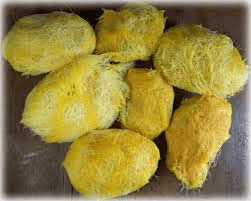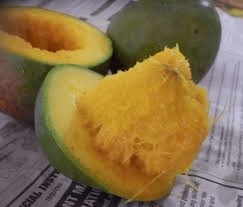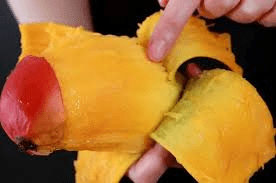Mango fibers are derived from various parts of the mango plant, including the fruit, peel, and seed kernel. These fibers have gained attention for their nutritional, functional, and industrial applications. They offer several benefits and can be used in a range of industries, making them an important by-product of mango processing.
Mango fruit fibers, primarily obtained from the pulp and peel, are rich in dietary fiber, which is essential for maintaining healthy digestion and preventing constipation. The dietary fiber in mango consists of both soluble and insoluble fibers. Soluble fiber helps lower cholesterol levels and control blood sugar, while insoluble fiber promotes regular bowel movements and adds bulk to the stool.
Due to these health benefits, mango fibers are often used as a functional ingredient in the food industry. They can be incorporated into various food products such as bakery items, cereals, and snacks to enhance their fiber content and improve their nutritional profile.
The peel of the mango is an excellent source of dietary fiber and bioactive compounds such as polyphenols, flavonoids, and carotenoids. These compounds have antioxidant, anti-inflammatory, and antimicrobial properties.
The fiber extracted from mango peels can be used as a dietary supplement or as an ingredient in functional foods. It can also be used to create biodegradable packaging materials, offering an eco-friendly alternative to traditional plastic packaging. Additionally, mango peel fibers can be used in animal feed to improve the nutritional content of livestock diets.
Mango seed kernels are another valuable source of fiber. The seed kernel contains a high amount of starch, which can be processed into various products. The fiber from mango seed kernels can be used as a thickening agent in food products, providing a natural and healthy alternative to synthetic thickeners.
It can also be used in the production of biodegradable plastics, which are gaining popularity as a sustainable solution to the global plastic waste problem. Furthermore, mango seed kernel fiber can be utilized in the textile industry to create natural fibers for clothing and other textile products.
The industrial applications of mango fibers extend beyond the food and textile industries. Mango fibers can be used in the production of paper and cardboard, providing a sustainable source of raw material for the paper industry. They can also be used in the manufacture of composite materials, which are used in construction, automotive, and packaging industries. The use of mango fibers in these applications not only helps reduce waste but also contributes to the development of sustainable and eco-friendly products.
Mango fibers are a valuable by-product of mango processing with numerous health benefits and diverse applications. They can be used to improve the nutritional content of food products, create biodegradable packaging materials, produce sustainable textiles, and manufacture eco-friendly industrial products.
The utilization of mango fibers not only adds value to the mango industry but also promotes sustainability and environmental conservation. As research and technology continue to advance, the potential uses of mango fibers are expected to expand, further enhancing their economic and environmental significance.
The Economic Importance and Uses of Mango Fibers

1. Textile Industry: Mango fibers can be processed into fabrics. These textiles are eco-friendly and can be used to make clothing, bags, and home decor items.
2. Paper Production: Mango fibers can be used in making high-quality paper products. This process involves pulping the fibers and using them in paper mills.
3. Biodegradable Packaging: Mango fibers are used in making biodegradable packaging materials. This sustainable option reduces plastic waste.
4. Animal Feed: Mango fibers, as by-products of juice extraction, can be processed into animal feed. They provide roughage and essential nutrients for livestock.
5. Composting: Mango fibers can be composted and used as organic fertilizer. This improves soil quality and promotes sustainable agriculture.
6. Biofuel Production: Mango fibers can be converted into biofuels. This process involves breaking down the fibers into fermentable sugars.
7. Construction Materials: Mango fibers can be added to construction materials like bricks and cement to enhance strength and reduce weight.
8. Cosmetic Industry: Mango fibers are used in exfoliating scrubs and other skincare products for their gentle abrasive properties.
9. Dietary Supplements: Mango fibers are rich in dietary fiber and can be used in supplements to aid digestion and promote gut health.
10. Agricultural Mulch: Mango fibers can be used as mulch in agriculture to retain soil moisture and reduce weed growth.
11. Handicrafts: Artisans use mango fibers to create eco-friendly crafts, baskets, and decorative items.
12. Insulation Material: Mango fibers can be processed into insulation material for buildings, providing an eco-friendly alternative to synthetic insulation.
13. Filtration Systems: Mango fibers are used in water and air filtration systems due to their natural filtration properties.
14. Erosion Control: Mango fibers can be used in erosion control mats to stabilize soil and prevent erosion.
15. Medical Uses: Mango fibers can be used in making biodegradable medical supplies like bandages and surgical threads.
16. Pulp for Cardboard: The fibers can be used in the production of cardboard, contributing to the packaging industry.
17. Textile Dyes: Mango fibers can be used as a natural dye for textiles, providing an eco-friendly coloring option.
18. Fuel Pellets: Dried mango fibers can be compressed into pellets and used as a renewable energy source.
Read Also: Ideal Feeds for Young and Adult Ruminant Animals
Products and By-products That Can Be Derived From Mango Fibers

1. Mango Fiber Fabric: Mango fibers are spun into yarn and woven into fabric used for clothing and upholstery.
2. Handmade Paper: Mango fibers are pulped and made into high-quality, handmade paper for stationery and artistic purposes.
3. Biodegradable Packaging: Mango fibers are processed into packaging materials like trays, containers, and wraps.
4. Animal Feed Pellets: Mango fibers are processed and compressed into pellets to feed livestock.
5. Organic Fertilizer: Mango fibers are composted and used as a natural fertilizer for plants.
6. Bioethanol: Mango fibers are fermented to produce bioethanol, a renewable source of energy.
7. Eco-friendly Bricks: Mango fibers are mixed with clay and other materials to produce lightweight, eco-friendly bricks.
8. Exfoliating Scrubs: Mango fibers are ground into a fine powder and added to skincare products as a natural exfoliant.
9. Fiber Supplements: Processed mango fibers are used in dietary supplements to provide additional fiber intake.
10. Agricultural Mulch: Shredded mango fibers are spread over soil to retain moisture and suppress weeds.
11. Handicrafts: Mango fibers are woven or molded into decorative and functional handicrafts.
12. Building Insulation: Mango fibers are processed into insulation materials for use in construction.
13. Water Filtration Media: Mango fibers are used in filters to purify water.
14. Erosion Control Mats: Woven mats made from mango fibers are used to prevent soil erosion.
15. Biodegradable Medical Supplies: Mango fibers are used to make medical supplies that naturally degrade after use.
16. Cardboard Products: Mango fibers are used in the production of cardboard for packaging and shipping.
17. Natural Textile Dyes: Mango fibers are processed into natural dyes for coloring fabrics.
Read Also: How to control Ruminants from destroying Grasses where they graze
Frequently Asked Questions (FAQ’s) About Mango Fibers

1. What are mango fibers?
Mango fibers are the fibrous materials obtained from mango fruits and trees, often used in various industrial applications.
2. How are mango fibers used in textiles?
Mango fibers are spun into yarn and woven into fabrics to create eco-friendly textiles for clothing and home decor.
3. Can mango fibers be used in paper production?
Yes, mango fibers are pulped and used to make high-quality handmade paper and other paper products.
4. Are mango fibers eco-friendly?
Yes, mango fibers are biodegradable and sustainable, making them an eco-friendly alternative to synthetic materials.
5. What are the health benefits of mango fiber supplements?
Mango fiber supplements aid in digestion, promote gut health, and provide essential dietary fiber.
6. How are mango fibers used in agriculture?
Mango fibers are used as mulch, compost, and animal feed, contributing to sustainable agricultural practices.
7. Can mango fibers be used in construction?
Yes, mango fibers can be added to construction materials like bricks and cement to enhance their properties.
8. How are mango fibers processed into biofuels?
Mango fibers are broken down into fermentable sugars and then converted into bioethanol, a renewable energy source.
9. What cosmetic products use mango fibers?
Mango fibers are used in exfoliating scrubs and other skincare products for their natural abrasive qualities.
10. Are mango fibers safe for medical use?
Yes, mango fibers can be processed into biodegradable medical supplies like bandages and surgical threads, which are safe and eco-friendly.
Read Also: Everything You Need to Know About Yarrow






